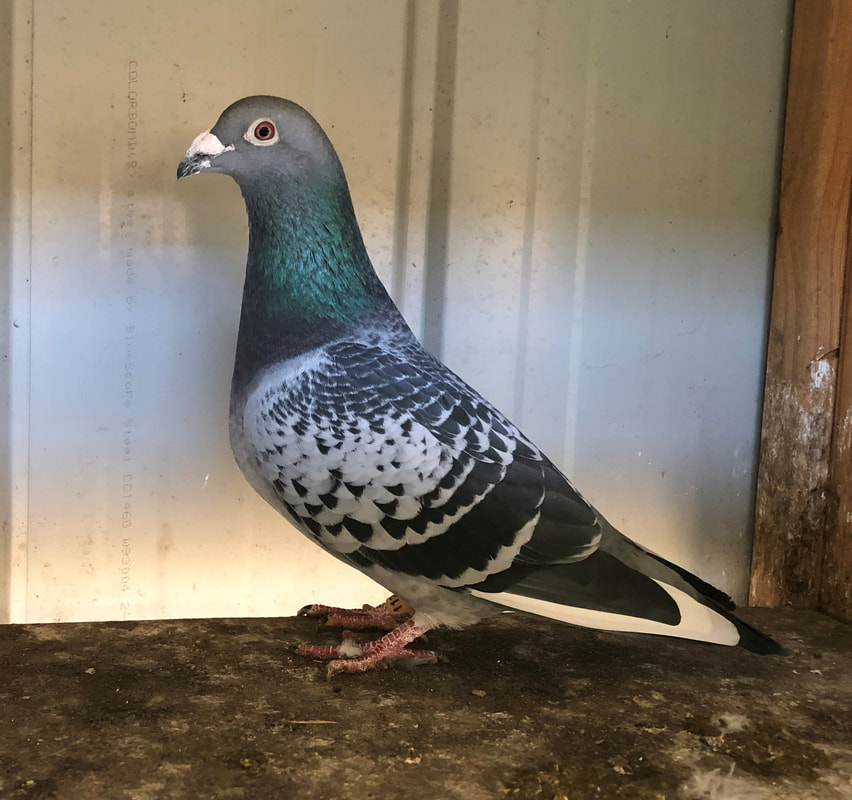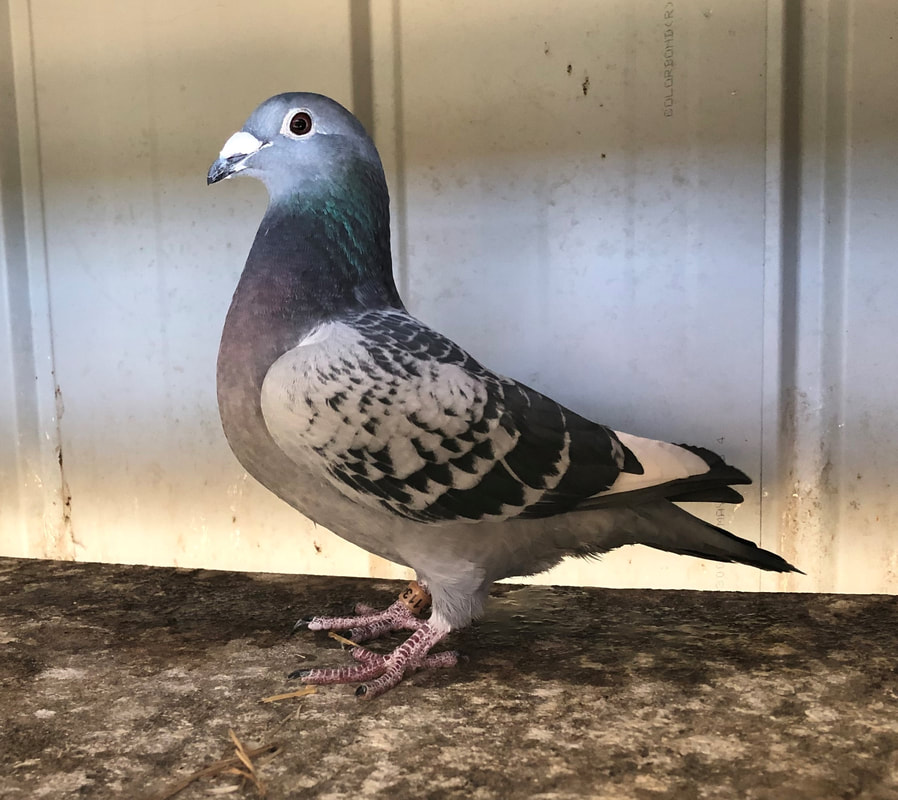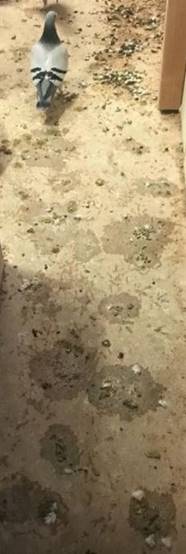- Home
- About
-
Health and Diagnosis
- Avian Influenza outbreak
- The Diagnostic Pathway
- Diagnosis at a Distance
- Dropping Interpretation
- Surgery and Anaesthesia in Pigeons
- Medical Problems in Young Pigeons
- Panting --it’s causes
- Visible Indicators of Health in the Head and Throat
- Slow Crop – it’s causes
- Problems of the Breeding Season
- Medications—the Common Medications used in Pigeons, their dose rates and how to use them with relevant comments
- Baytril—the Myths and Realities
- Health Management Programs for all Stages of the Pigeon Year
- Common Diseases
- Nutrition
- Racing
- Products
The importance of correct PMV vaccination
This mini-disease outbreak raises several important issues regarding PMV vaccination. The initial reaction of some fanciers after hearing that the problem was PMV was to conclude that the vaccine was either not effective or that alternatively, we were dealing with a new strain of PMV. Both conclusions are incorrect. There is sufficient genetic overlap between various PMV strains that the vaccine would be effective against any strain. To blame the vaccine is a bit like putting 4 stroke petrol into an engine designed for 2 stroke fuel and then when the engine does not work concluding that there is a problem with the fuel . Like petrol, for a vaccine to work it has to be used correctly. Fanciers are reminded that the killed La Sota PMV vaccine if used correctly is 100% effective. The correct vaccination method is to give 2 shots about 4 weeks apart with both shots being given after 6 weeks of age. This doesn’t sound that hard but some fanciers seem to have trouble following that advice. Issues regarding PMV vaccination 1/ Do not vaccinate too young If youngsters are bred from vaccinated parents some of the parent’s immunity passes to the babies. This “passive” immunity interferes with the youngsters developing their own active immunity from vaccination. Thorough testing in 2012, done in Australia, showed that this passive immunity lasts until the babies are about 6 weeks old. A fancier, therefore, giving a young pigeon its first shot under 6 weeks of age cannot be guaranteed that this first shot will work. It is reasonable to give the first shot at 4 weeks at weaning, particularly in a high risk situation but if this is done 2 further shots will need to be given to ensure the development of protective immunity. Remember the birds need 2 shots after 6 weeks of age to be immune. 2/ Importing European vaccines. In Europe PMV vaccines are available that are made from pigeon origin PMV strains. The advantage of these vaccines is that if birds are vaccinated with these and are exposed to PMV they are less likely to develop into “silent” carriers ie they are less likely to be transient carriers of the virus. The vaccines that are available in Australia stop the birds getting sick with PMV but if exposed they do become infected with the virus for a short period ( several weeks ).This temporary carrier state does the birds no harm but it does mean that they can spread the virus. This is less likely to occur with the European pigeon origin vaccines. I am aware that some fanciers have imported this vaccine for use in their own birds. Importation of vaccine into Australia is illegal. I don’t want to be critical of these fanciers. I can perhaps understand why fliers have been tempted to do this and feel that probably those involved did not understand the potential ramifications of their actions. I will explain below why this practice should not continue and hope that once they understand the situation that they no longer choose to do this. Importation of vaccine into Australia is illegal, and for good reason. Vaccines are developed and held in media that are ideal for the growth and maintenance of the virus in the vaccine. This preparation is also attractive to other viruses. This means that there can be no guarantee that there are no other viruses present in the preparation as well. Bear in mind that there can be up to 17,000 different viruses in a single glass of water. It is impossible to check for all of these. Australia does not want to introduce any new viruses. Fanciers who smuggle in a European vaccine illegally will in due course inject their own pigeons and these, with time, will mix with birds from other lofts particularly during racing. This is a great way to introduce and spread a new virus across the country. Another thing to consider is that vaccines are very fragile. PMV vaccines need to be kept at specific temperatures. It takes 5 days to post a vaccine from Europe to Australia. I feel that the chance of the posted vaccine being within the temperature range required to keep the vaccine fully potent for the whole time is low. Even if ice is still present in the parcel this does not guarantee that the vaccine is OK. If ice sits against the vaccine container it can locally freeze it, which, depending on the vaccine, can reduce the vaccines effectiveness. Fanciers who smuggle vaccine into Australia therefore risk not giving their birds an effective vaccine and subsequently losing their birds either through the birds catching the disease or alternatively having reduced immunity, inadequate protection , sub clinical disease if exposed to PMV and impaired race performance. This of course is not to mention the risk that they impose on the rest of the Australian pigeon community through introducing another exotic virus. Now that the situation has been explained I would be very disappointed if the illegal importation of vaccines into this country continues. The smuggling of vaccines into this country by any fancier is to be strongly condemned. 3/ Yellow lumps at the vaccine injection site At the Melbourne Bird Veterinary Clinic we have seen and tested many of these birds now. Without exception they have turned out to be infections. Pigeons don’t have the enzymes in their white blood cells to produce liquid pus like a mammal. Pus in birds is thick, yellow and cheesy. People blame the vaccine for the formation of these yellow lumps but of course this makes no sense. It is common sense that if the yellow lumps were caused by an innate feature of the vaccine then it would affect all lofts to a similar extent. I see on the internet fanciers condemning the vaccine because they get a lot of birds with yellow lumps after vaccination. One fancier actually stated that a third of his birds got them. All they are announcing to the world is that they have a poor vaccination technique. If the needle becomes contaminated between pigeons with dust from the loft, or is touched or is injected too deeply into the crop then it will be contaminated with bacteria and infect subsequent pigeons. The tip of the needle should go just below the skin and when correctly injected a white ‘flare’ should be seen just below the skin. There is no need to attempt to sterilise the skin with disinfectant as pigeon skin is virtually sterile anyway. If concerned, fanciers should just change the needle every 10 or so pigeons or whenever they think it may have become contaminated. Needles literally cost less than 5 cents each. This means that even if the needle is changed for every pigeon it costs less than $5.00 for 100 pigeons. Hardly a big expense. 4/Fake veterinary news Several years ago some information was spread, I am sorry to say , by a veterinarian that although it was necessary to vaccinate now in Australia against PMV, that the vaccine in some way, by an as yet unknown mechanism, altered the development of natural immunity in young pigeons. The vet went onto explain that as a result these pigeons were more vulnerable to disease and it was now necessary to use new methods and products developed by him to counter the damaging effects of the PMV vaccination on immunity. This information which can be described as fake veterinary news was presented as veterinary fact when this was just not the case. It was purely personal opinion. The veterinary profession as a whole does not believe that this is the case, there are no studies showing that this happens. The proposed mechanism is unknown because it does not exist. It is all just a hoax. Unfortunately the fake news led to many fanciers not vaccinating their pigeons. Some of these subsequently lost significant numbers of birds to the disease. As a veterinary colleague of mine at the University stated, the vet who spread this false information has the blood of hundreds, if not thousands of pigeons on his hands. It is worth remembering that some Victorian doctors, several years ago, that spread misinformation that led to some parents not vaccinating their children were struck off. The irony of it all is that the multimillion dollar vaccine companies that make the vaccines put a lot of time, effort and money into ensuring that the base that the vaccine is in, be it oil or otherwise actually enhances the immunity formed by the vaccine itself. These vaccines then have to pass the extremely rigorous testing protocol demanded by the Australian authorities before market release with safety of use being a top concern. In a conversation with the Pfizer manager in charge of distribution of the company’s products throughout the Australia-Pacific region, he explained that the company was concerned about the unfounded criticism of one of their vaccines and that legal action against the veterinarian concerned was an option. 5/ Live (NDV4) vaccines vs killed La Sota vaccines When we did the 18 month long PMV vaccine trial in 2012 we found that when pigeons received a single dose of La Sota vaccine, 70% were fully immune in 4 weeks. When they were given a second shot 4 weeks 100% became immune. Conversely when the pigeons were given NDV4 none were immune after 4 weeks. When given a second shot most but not all became immune and the level of immunity that developed was not as high as that produced by the La Sota vaccine. Recently some people have been advocating the use of NDV4. My simple answer is why – particularly when there is a safe, more effective vaccine available. Some Queensland fanciers have suggested that because NDV4 is alive it can give the pigeons the disease. This is nonsense. The live virus in the vaccine has been modified so that it cannot cause disease. The only way that use of the NDV4 vaccine can cause disease is that if it is used, because it fails to cause the development of immunity in all pigeons this means that if they are exposed to PMV then some of them will get sick. The simple answer to all of this, is that unlike other diseases, notably Rota virus, where a completely effective vaccine is still a work in progress, we are a bit spoilt with PMV. We have a safe, effective vaccine that has been extensively trialled. These trials were completed 7 years ago and the result of these trials was made widely available being published in the national pigeon magazines and also the peer reviewed Australian Veterinary Journal. If fanciers have any comments, queries or questions about PMV vaccine use they are more than welcome to contact me. I am happy to reply and comment. In the meantime prevent PMV killing or damaging your birds by using the killed La Sota vaccine . The Australian brand names are “Poulvac and “Newcavac” and remember it is 2 shots about 4 weeks apart with both shots being given after 6 weeks of age and then annual boosters.
4 Comments
|
AuthorDr Colin Walker Archives
October 2020
Categories
All
|



 RSS Feed
RSS Feed